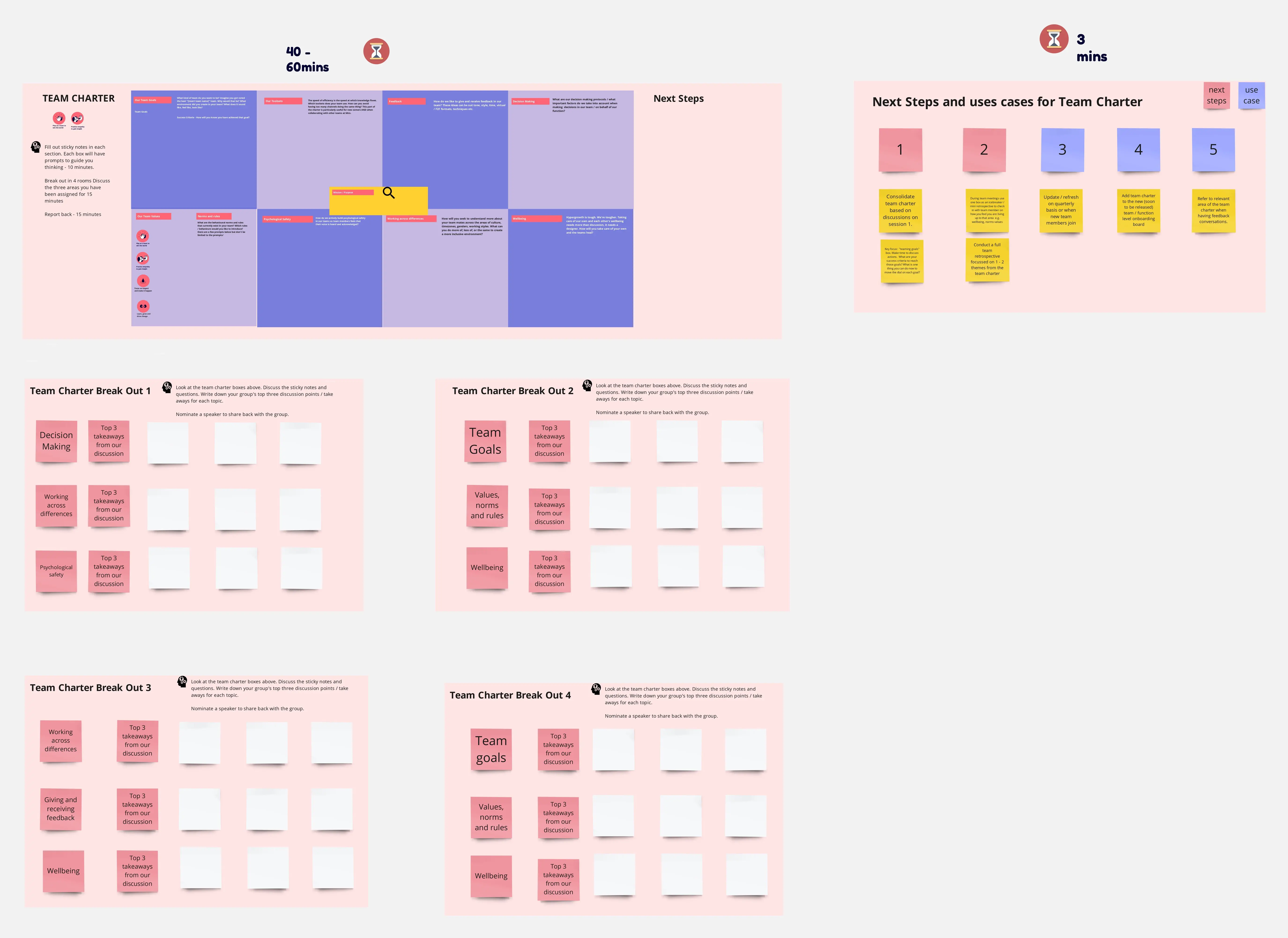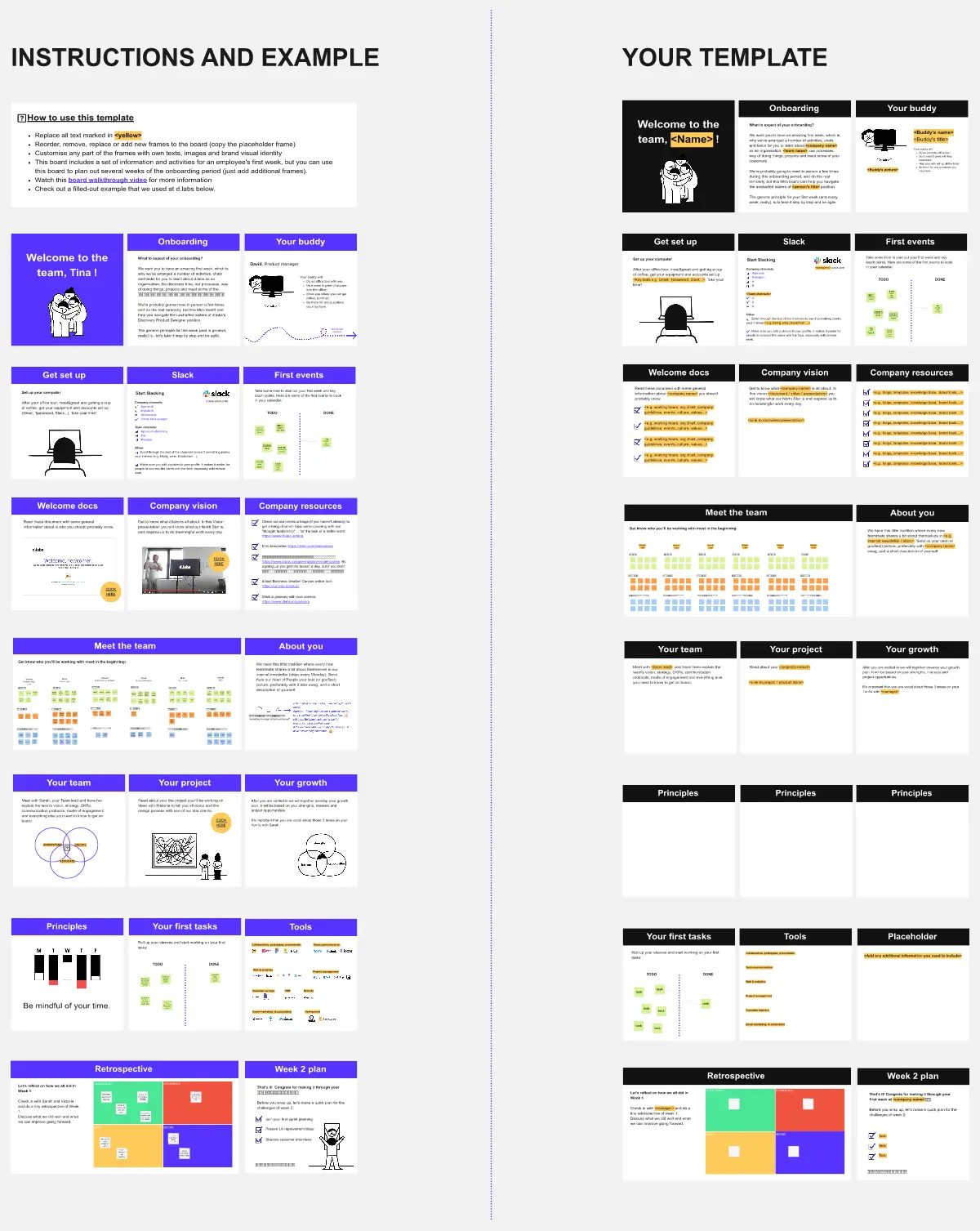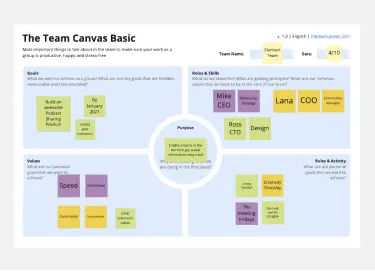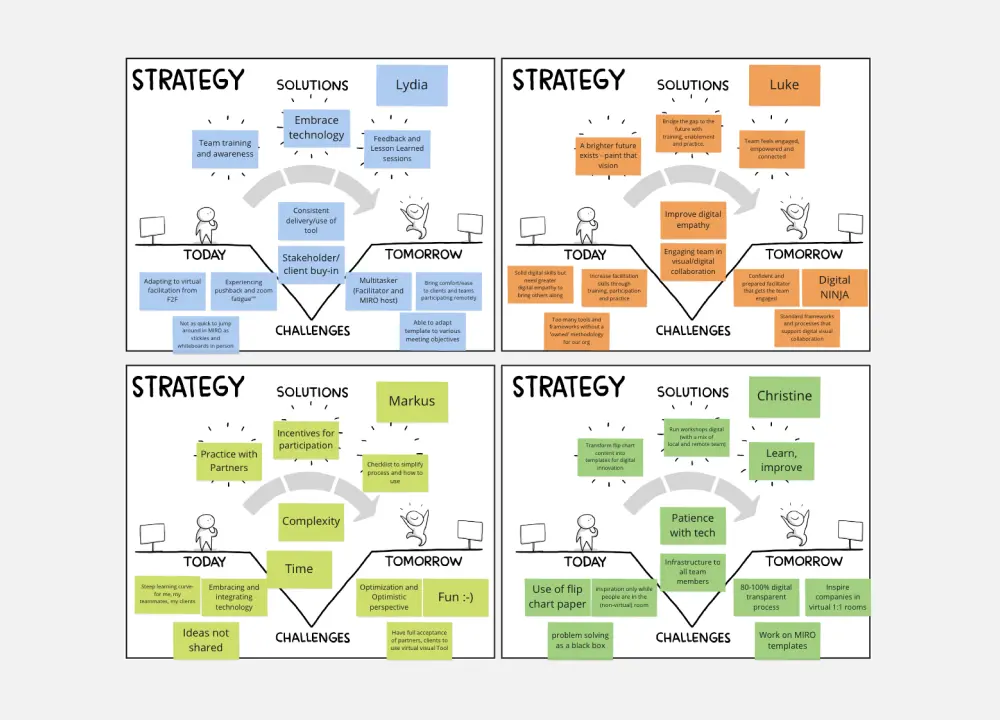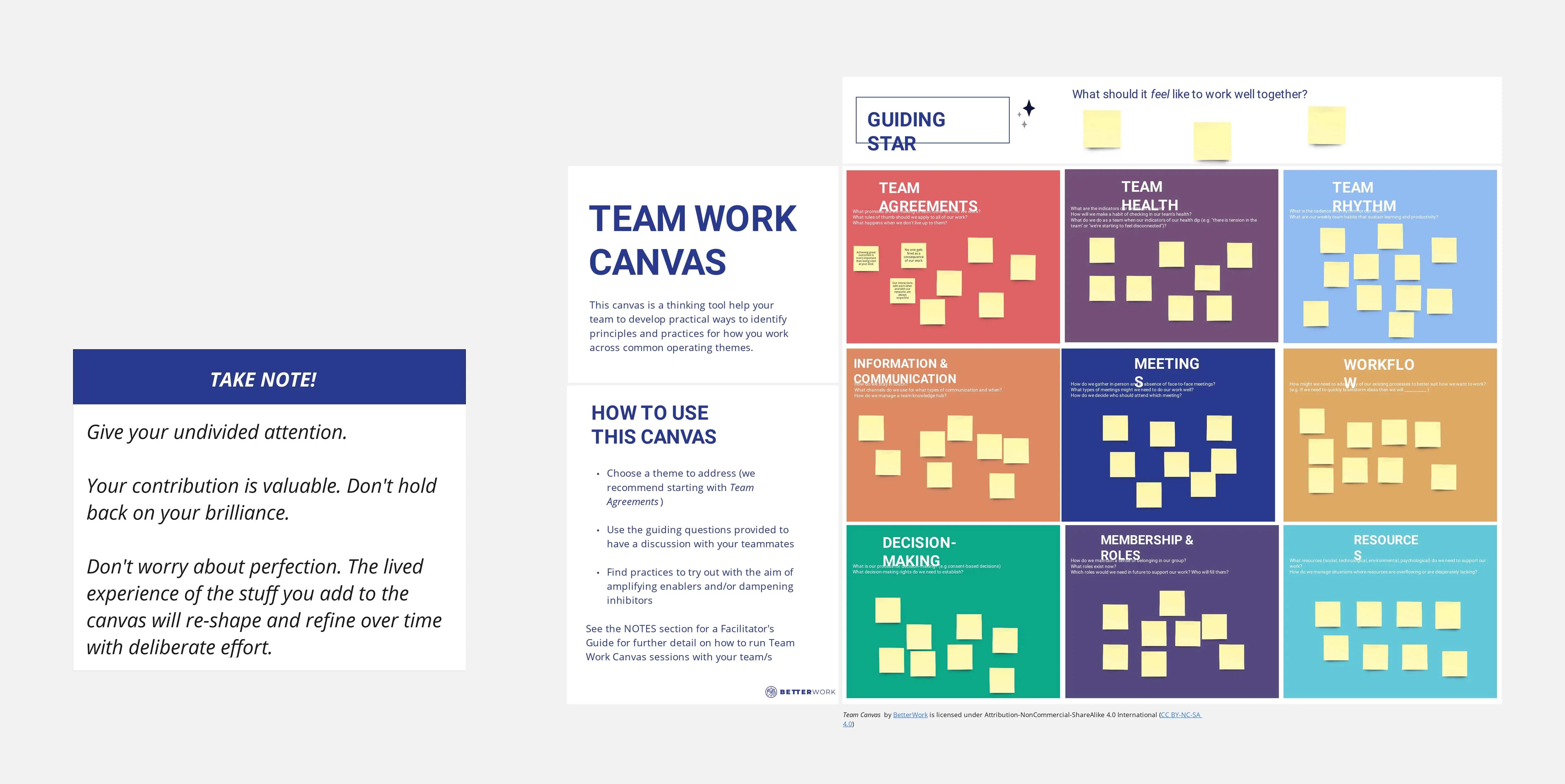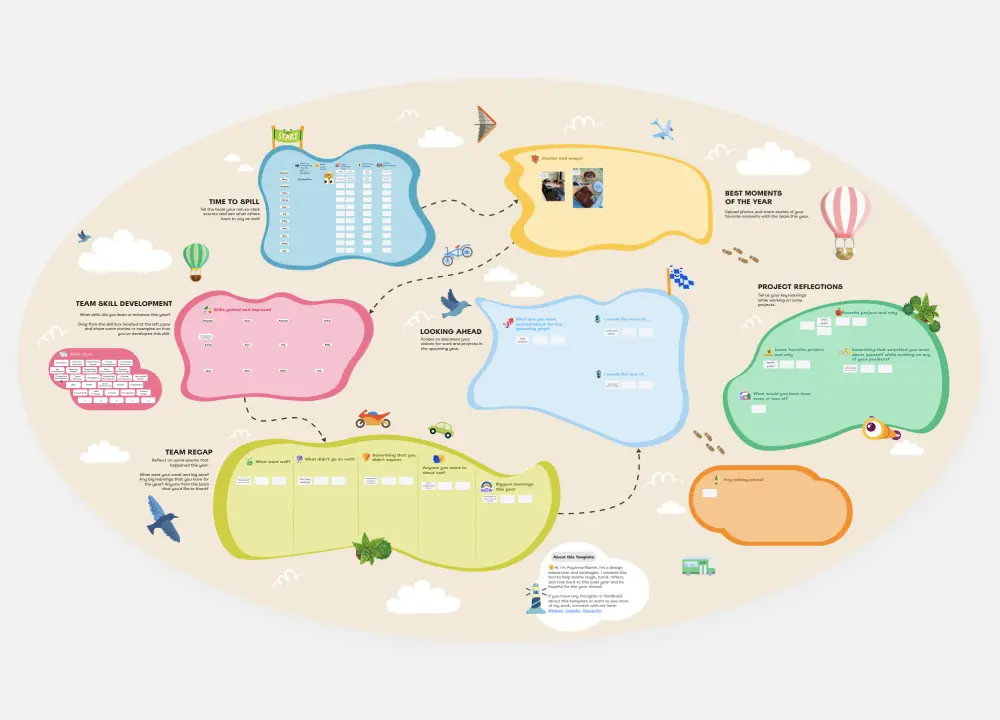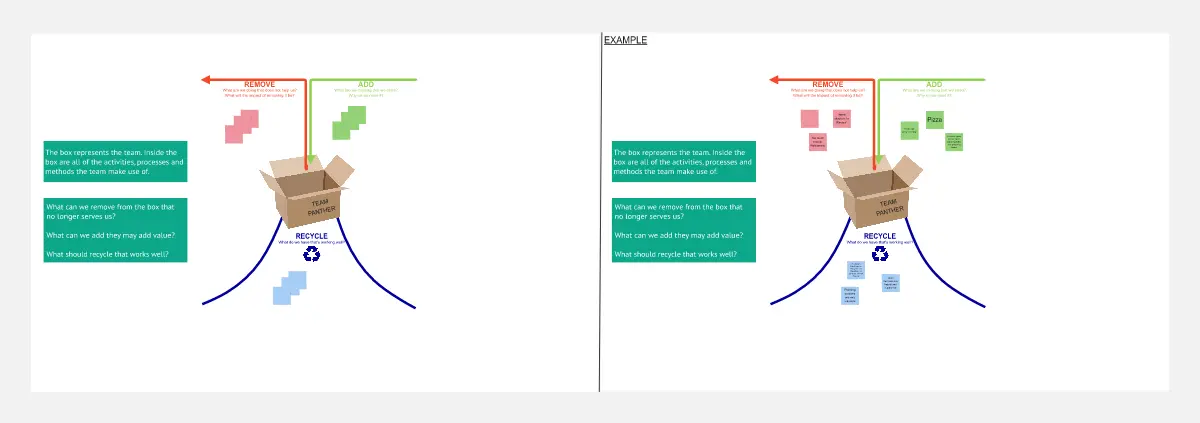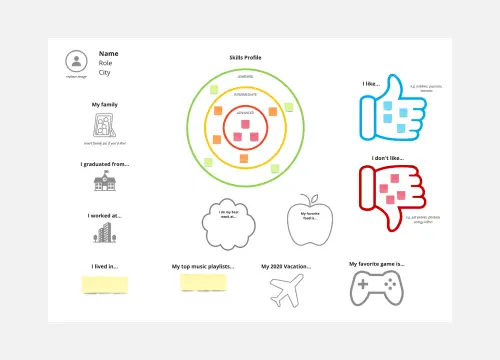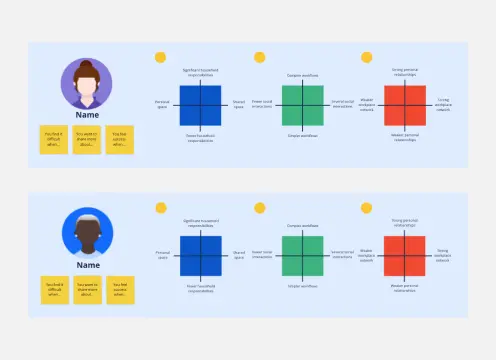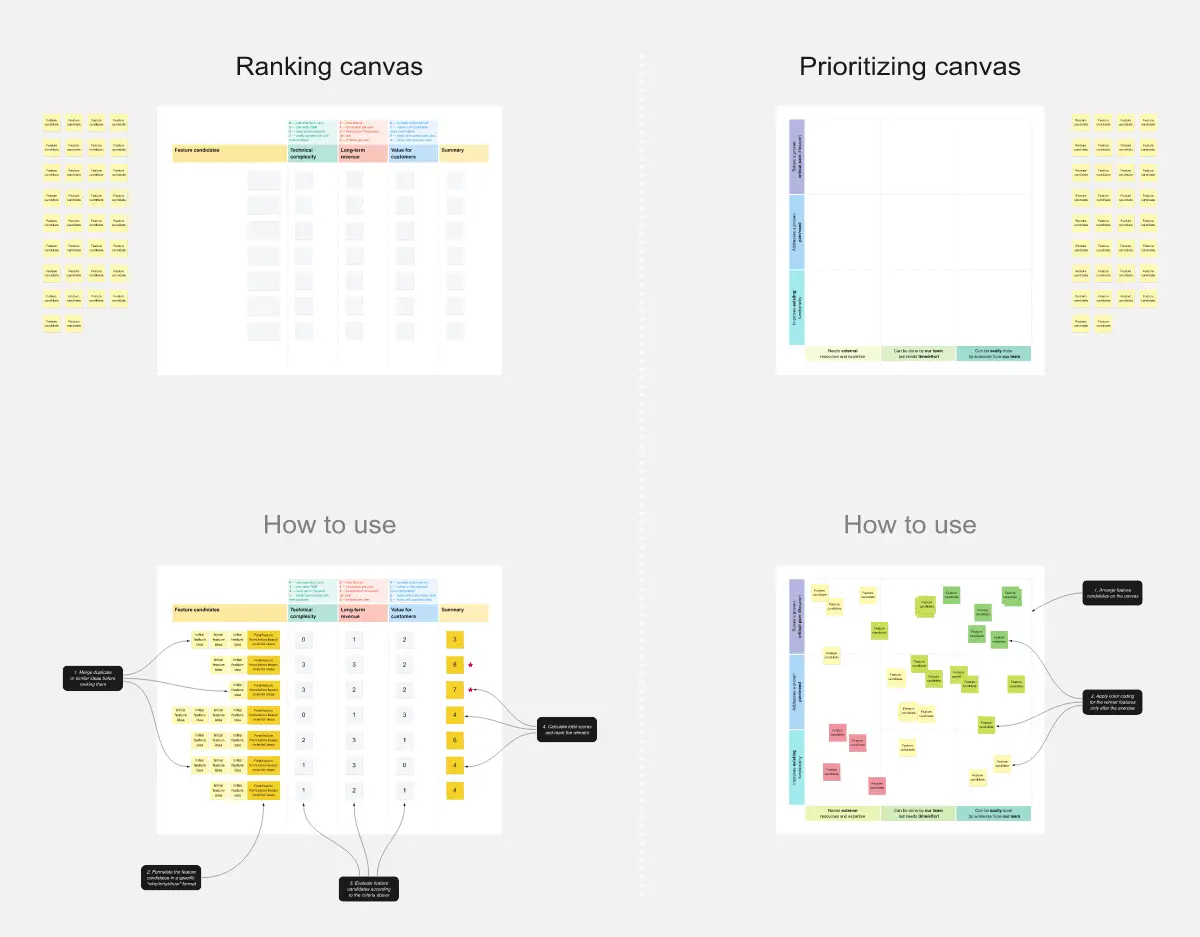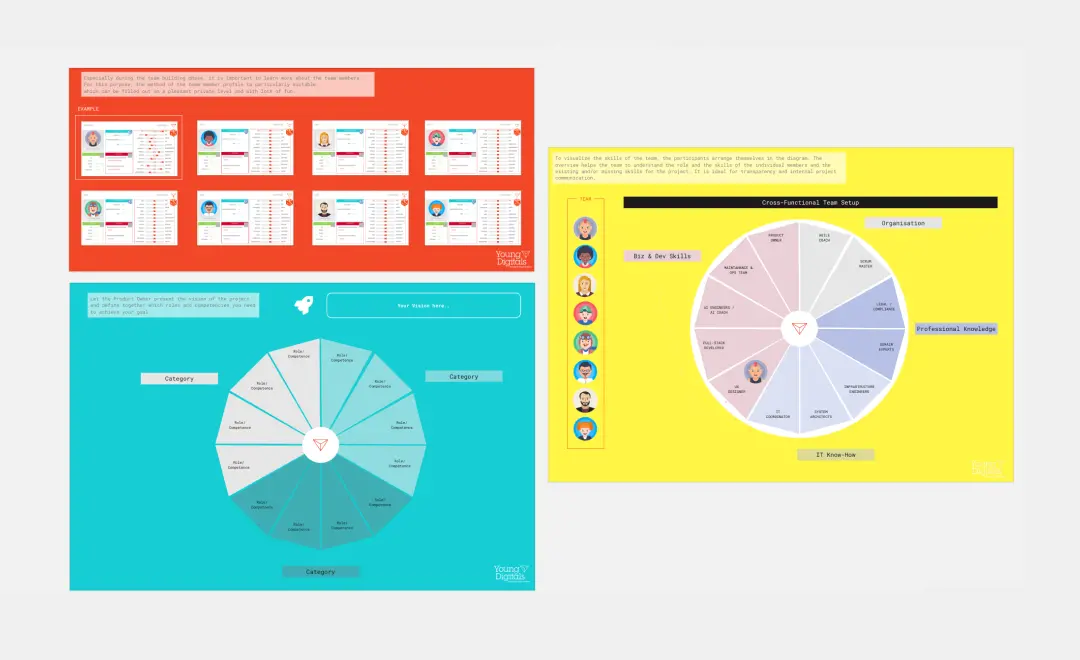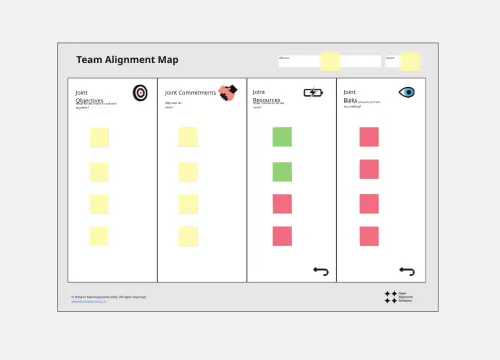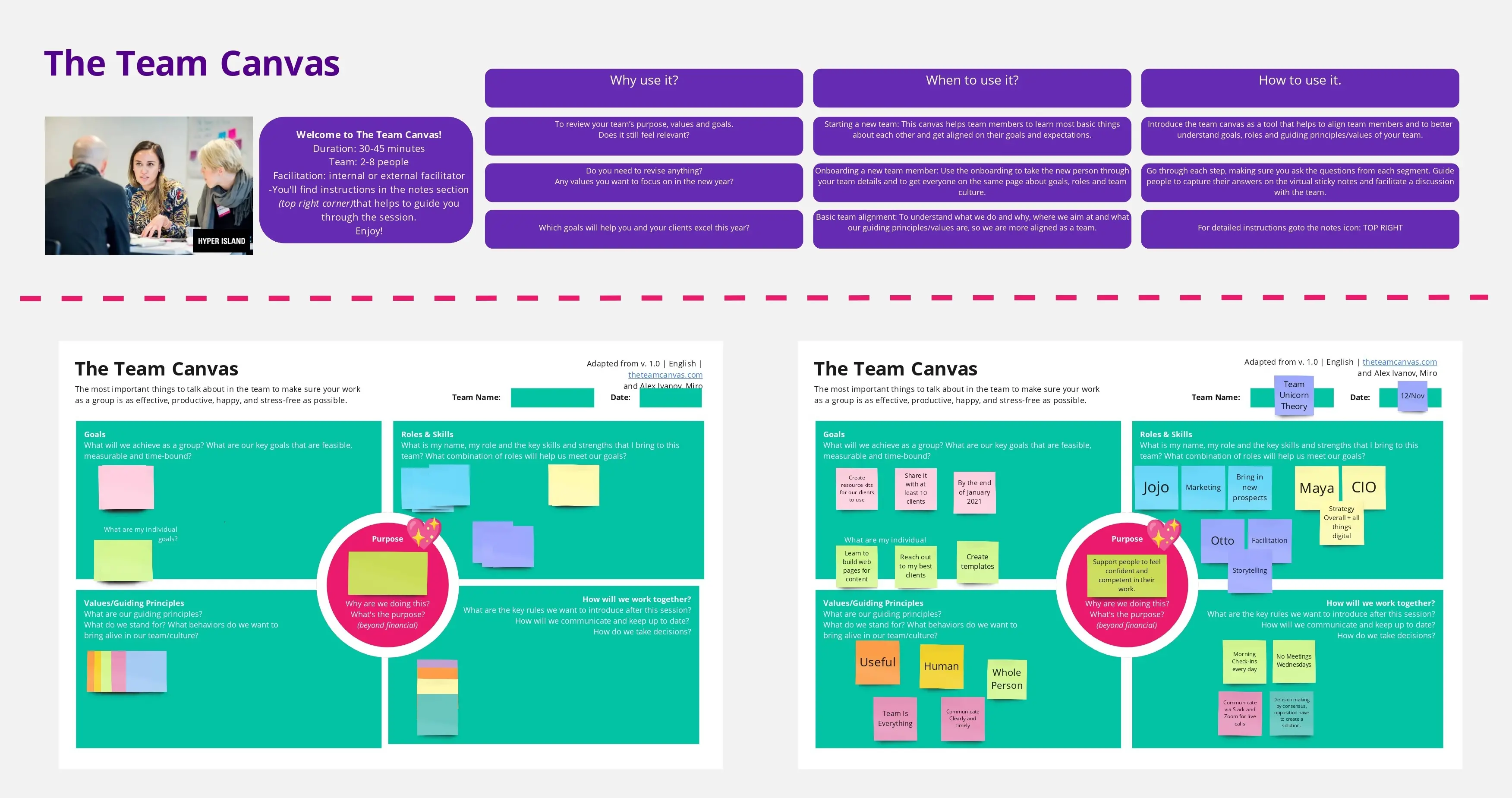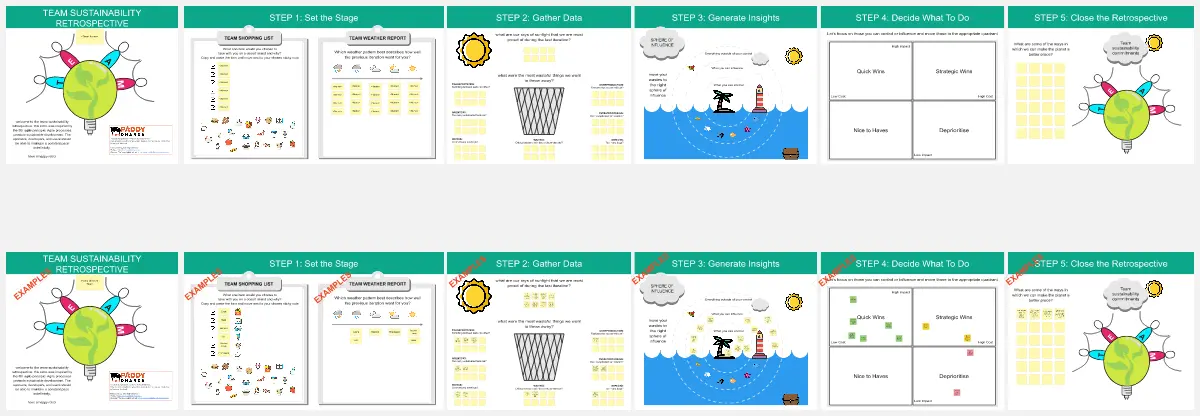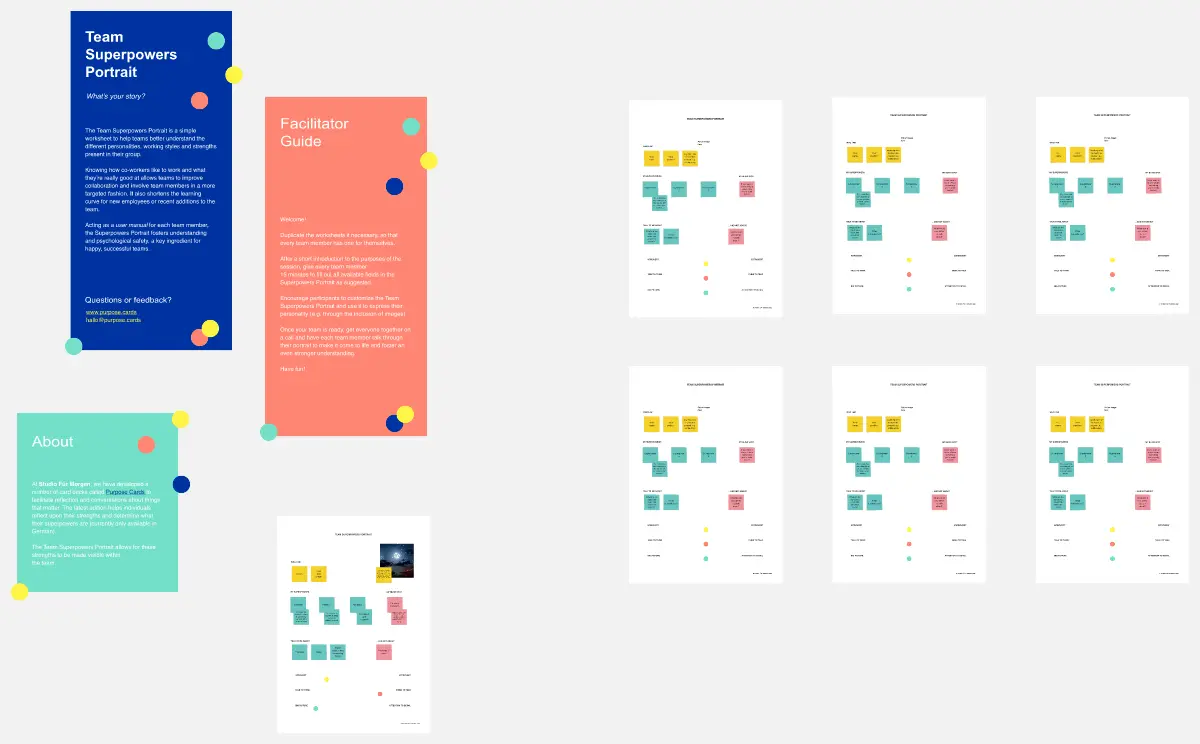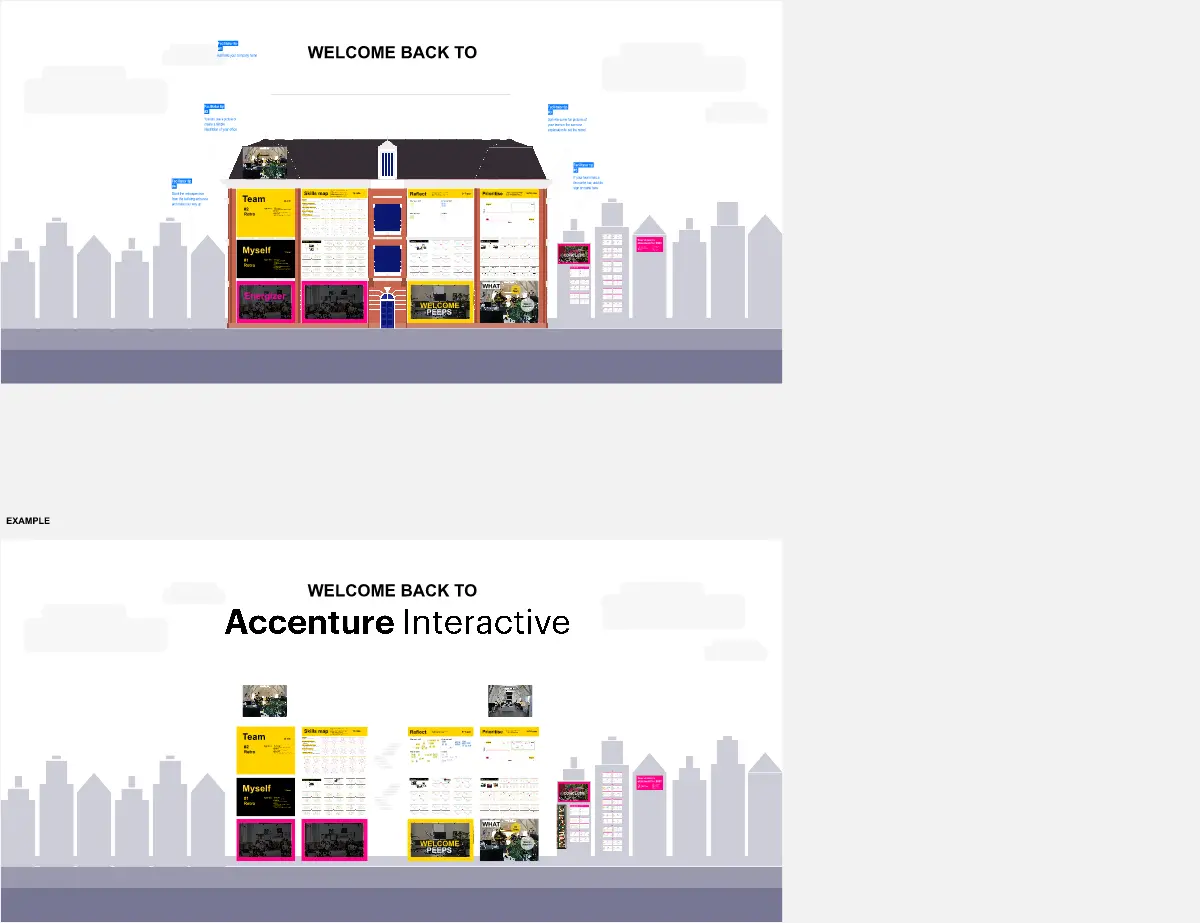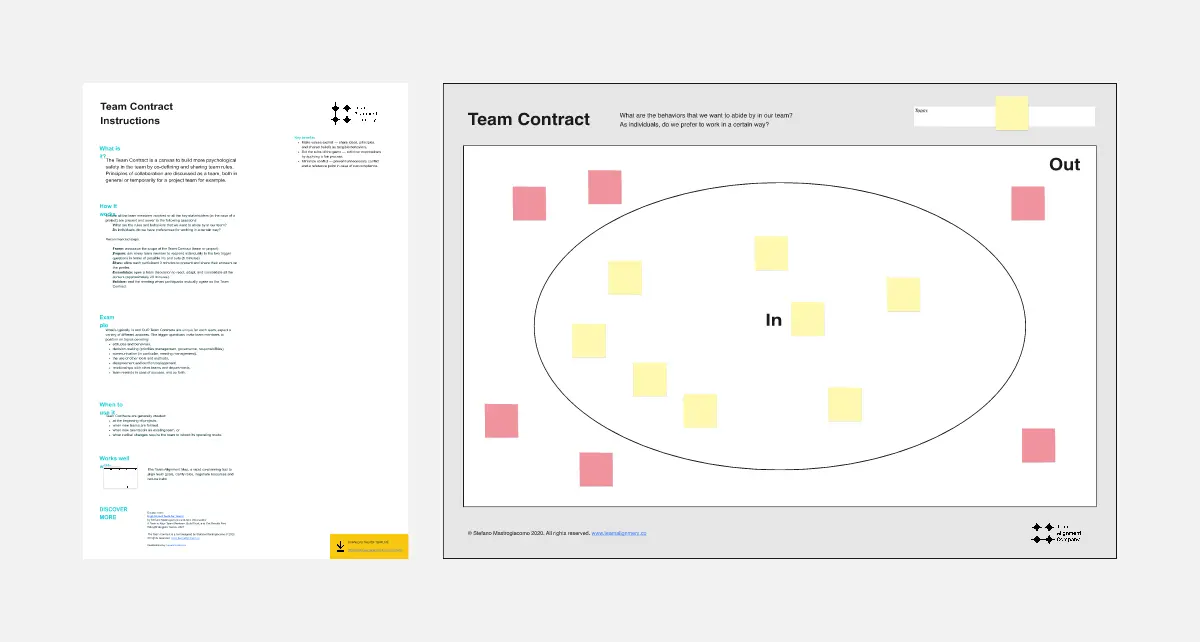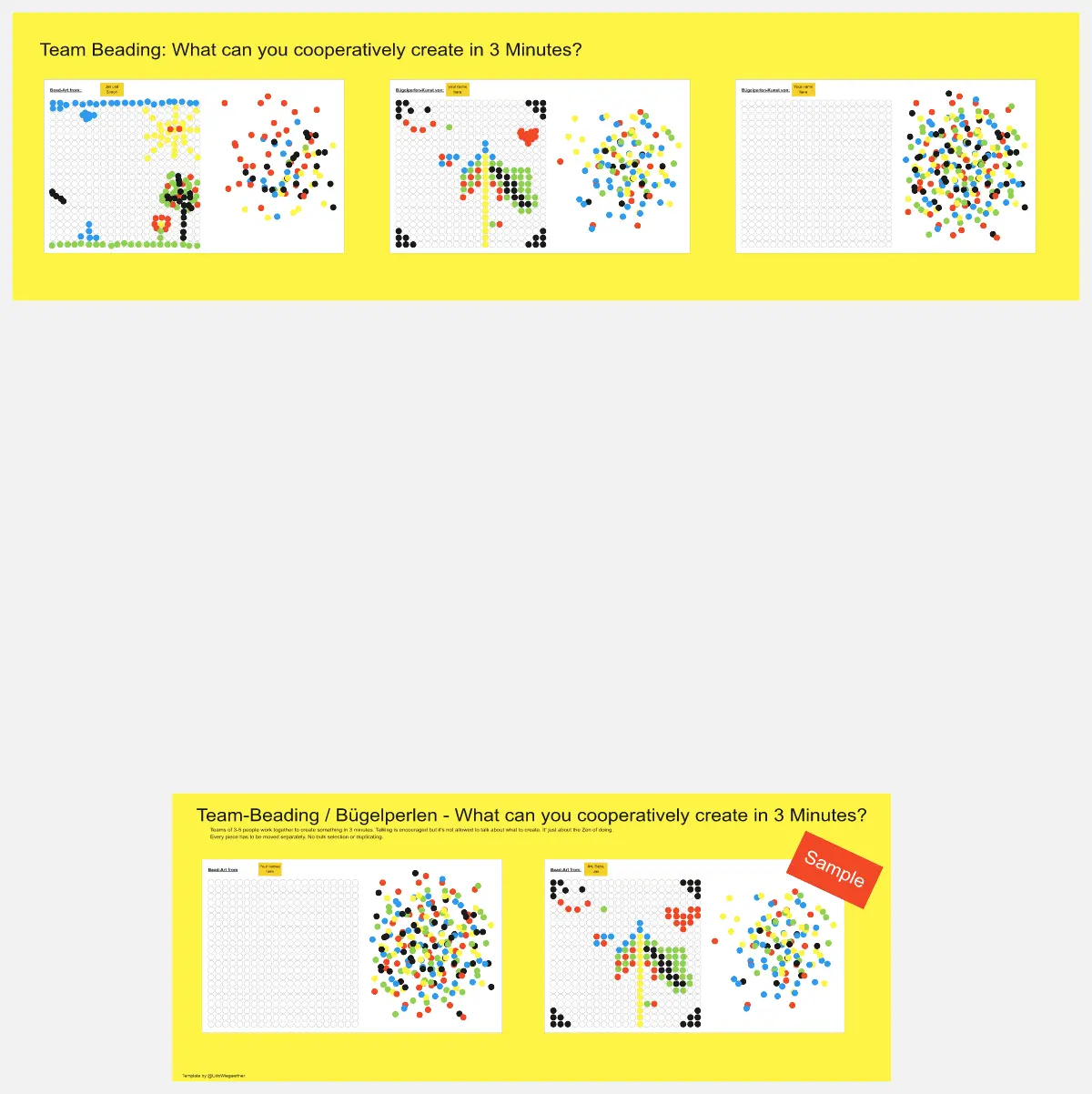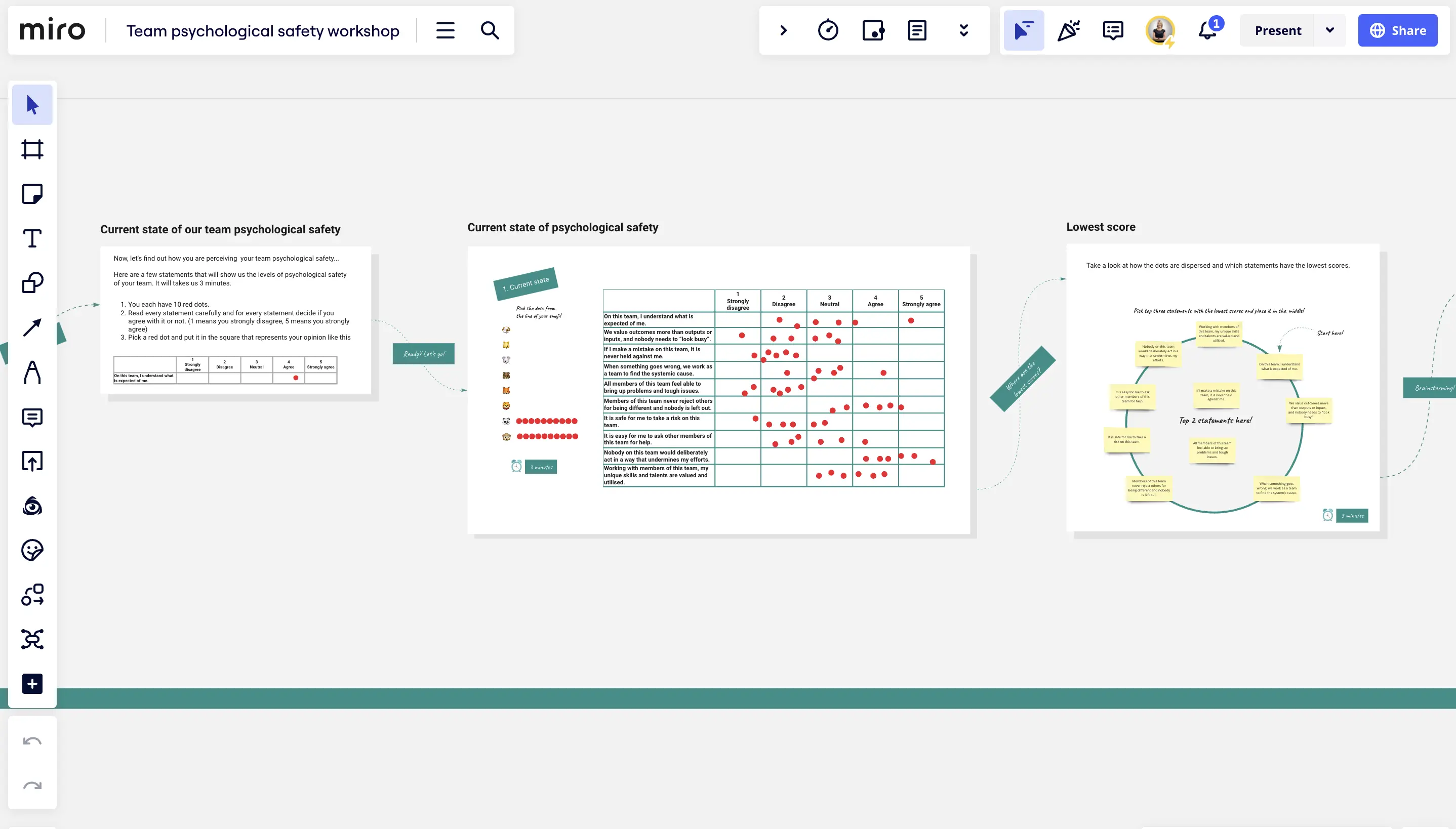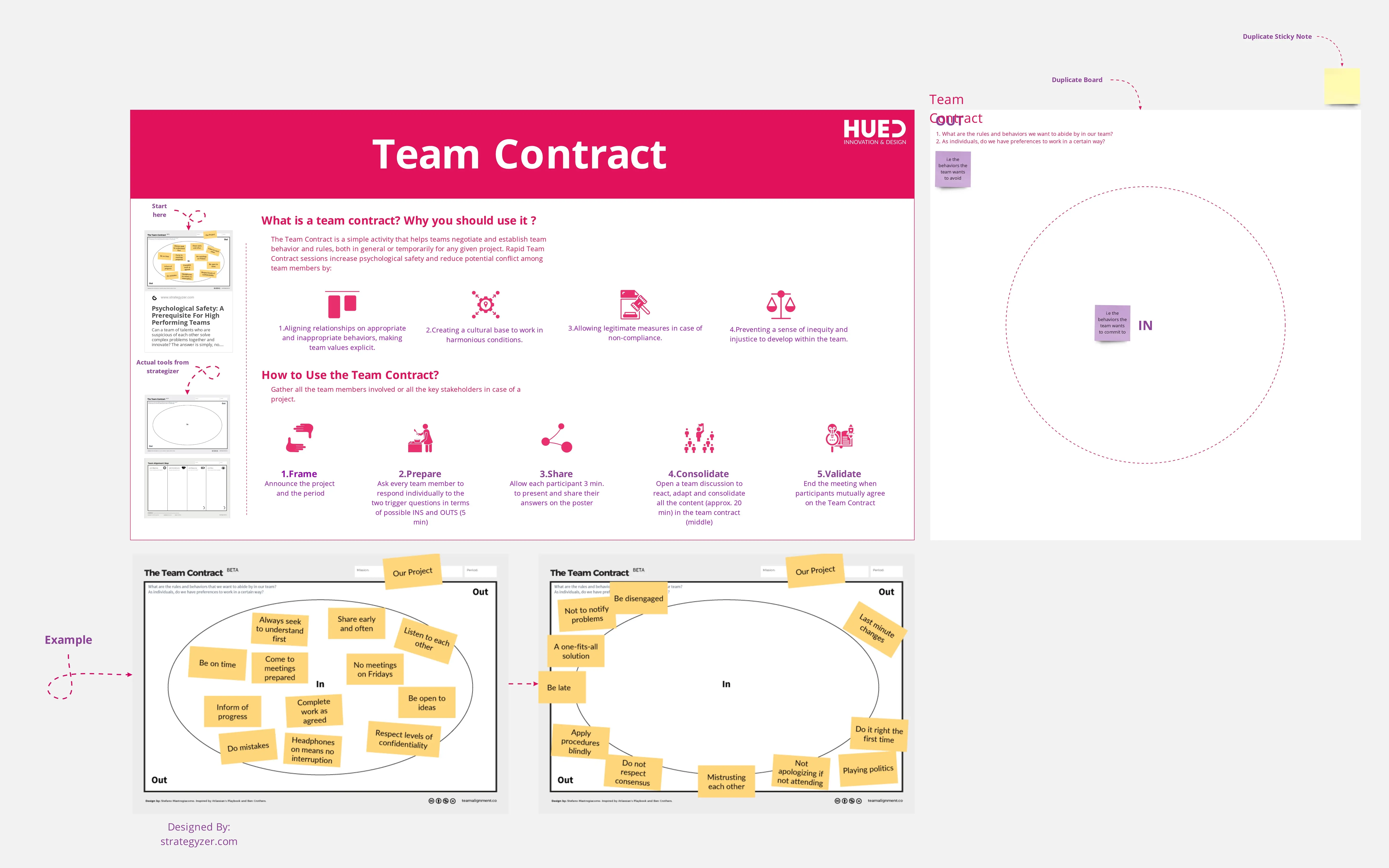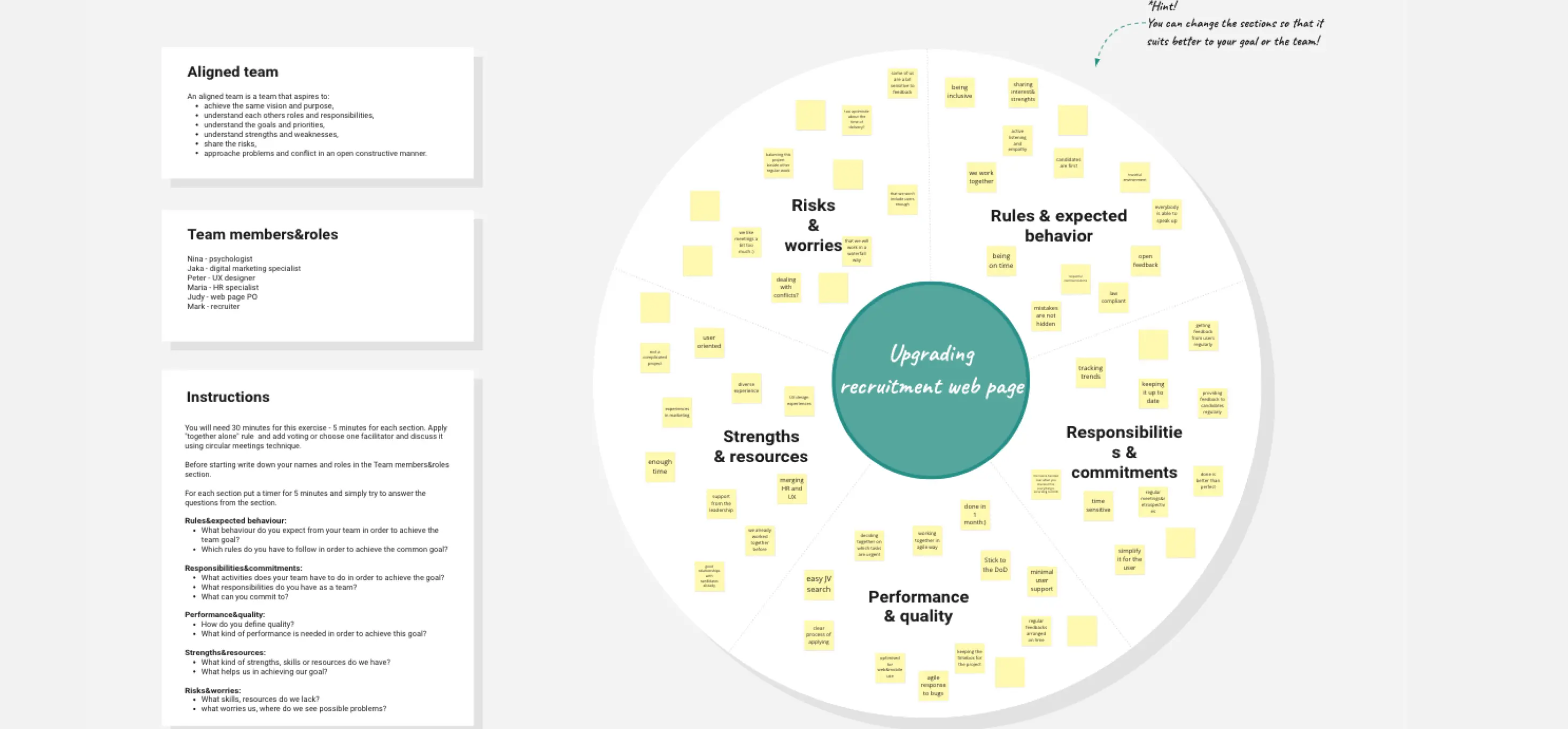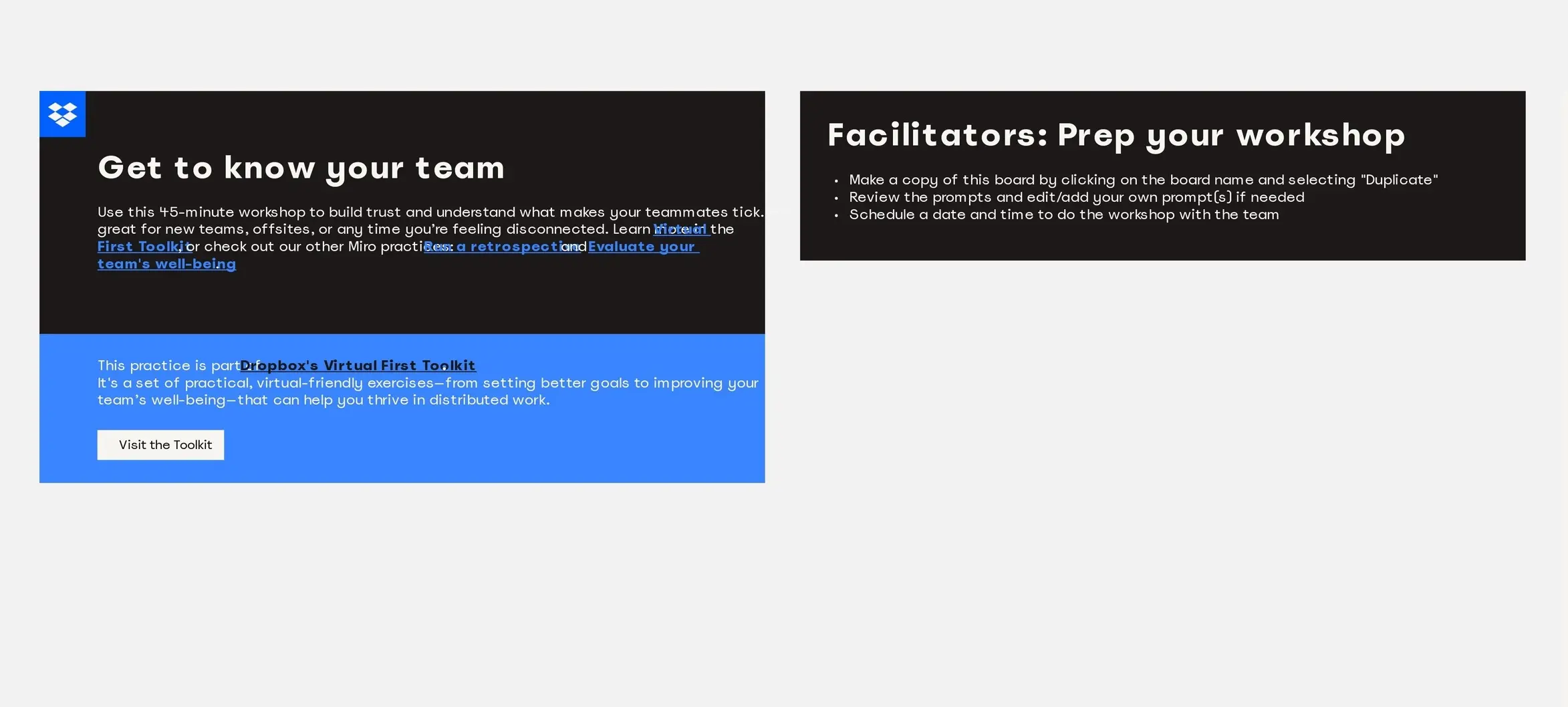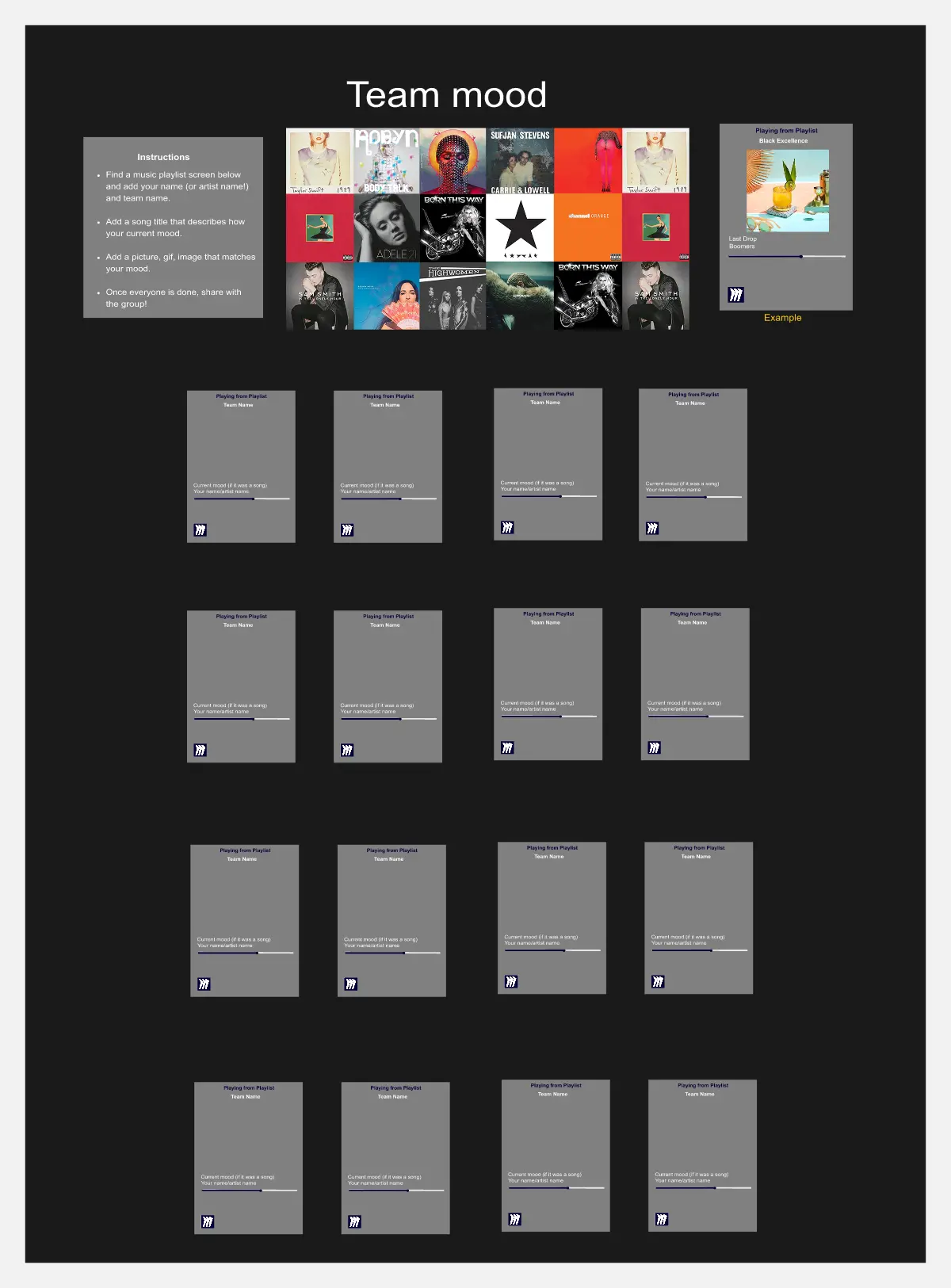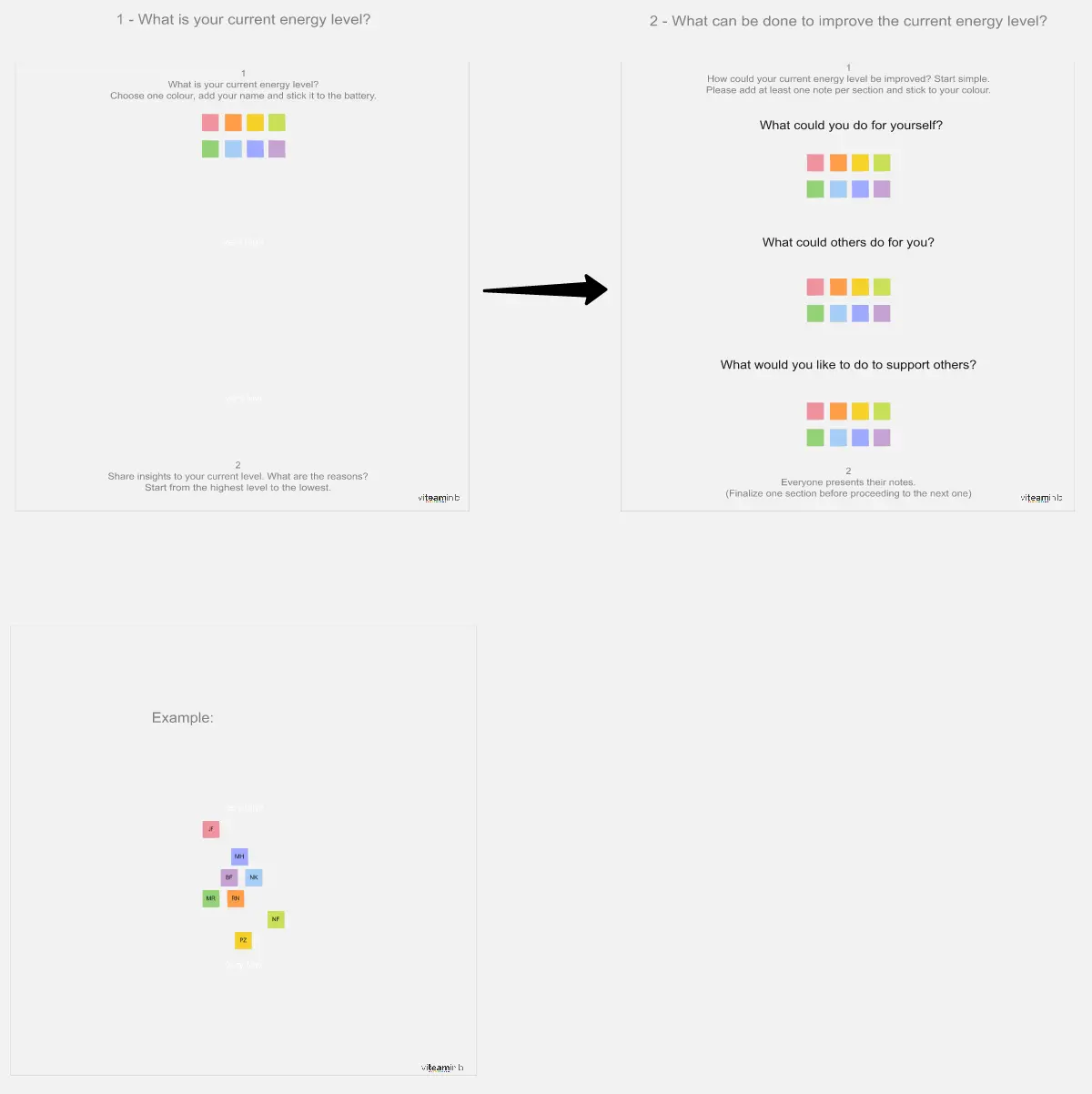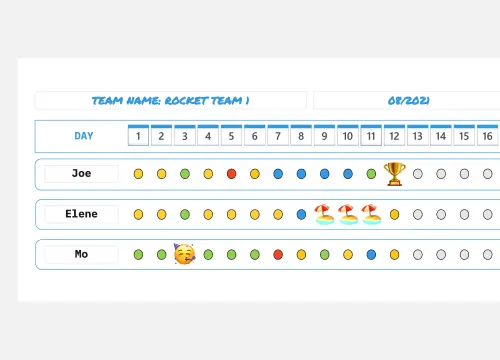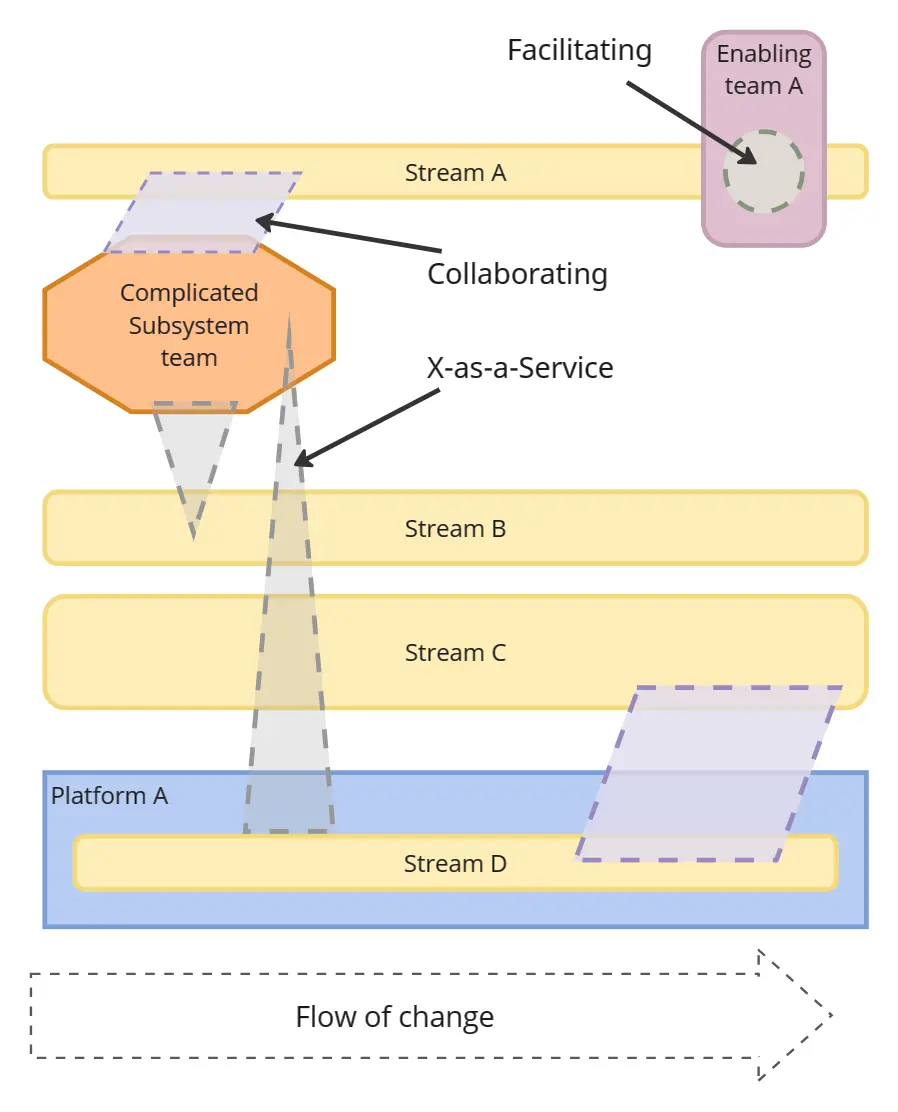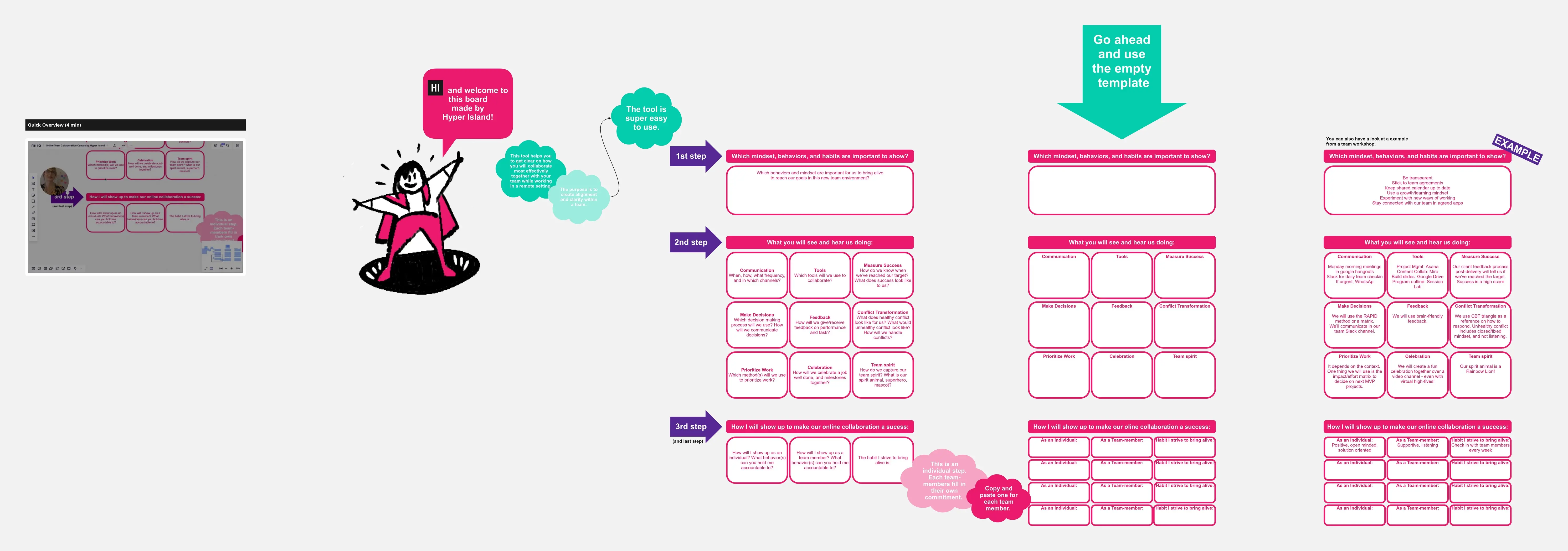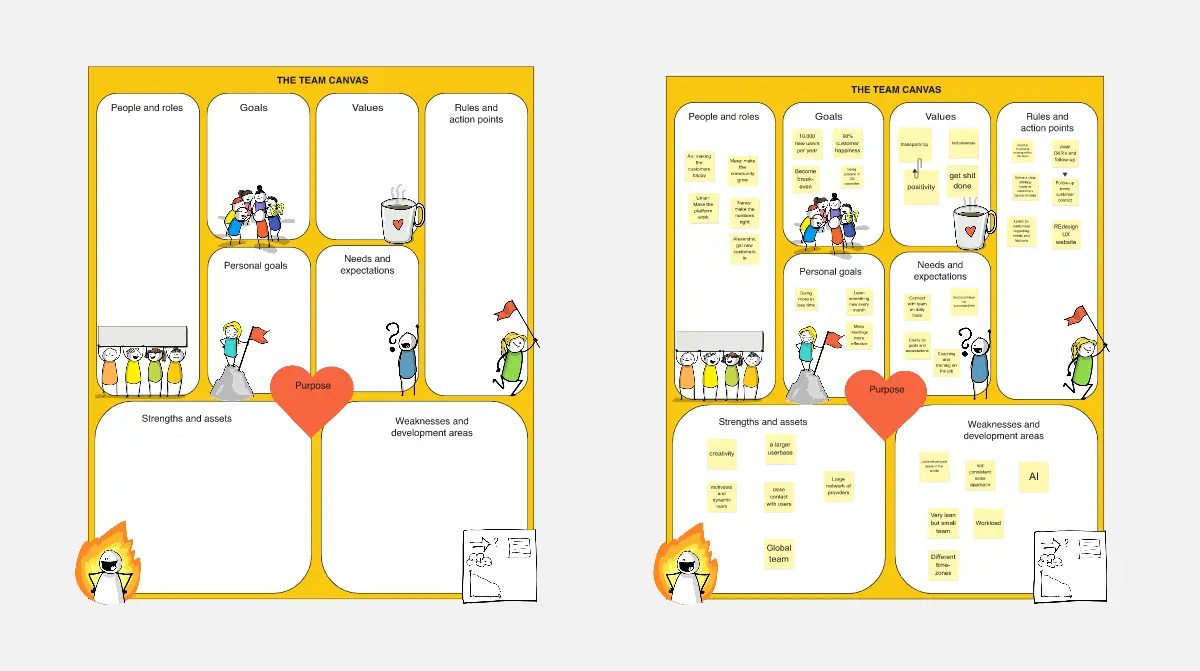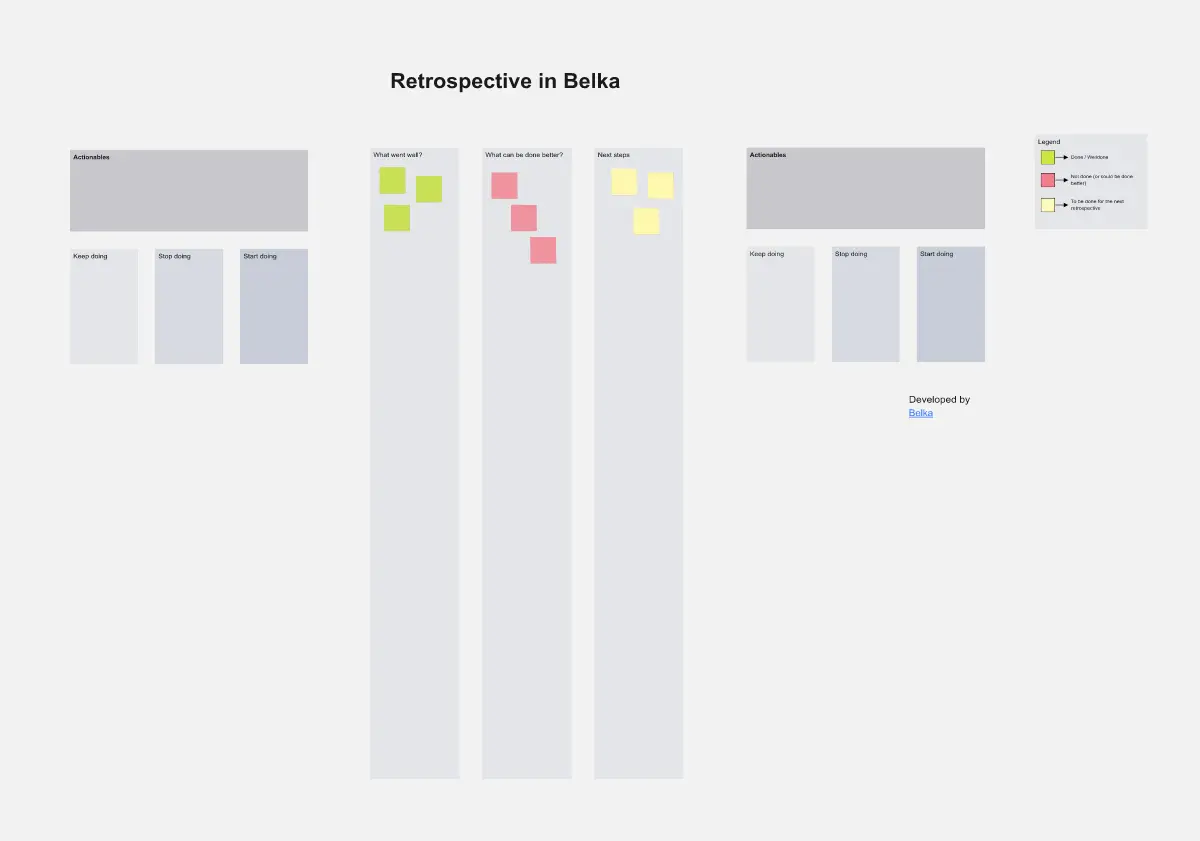About the Team Charter Templates Collection
Our team charter templates help teams establish a clear and shared understanding of their goals, roles, and processes. These templates provide a structured approach to defining team norms, values, and objectives, ensuring everyone is on the same page from the start. Whether you're forming a new team or realigning an existing one, our collection of team charter templates, including the team canvas template and project team charter template, offers the flexibility and tools you need to create a cohesive and productive team environment.
When and how to use team charter templates for maximum impact
Team charter templates help set the foundation of any team. They are best used at the beginning of a project or when forming a new team. By clearly defining the team's purpose, roles, and responsibilities, these templates align everyone toward shared goals. For maximum impact, use them during initial team meetings to establish a common understanding and revisit them periodically to ensure alignment as the project evolves.
Why you'll love our team charter templates
Using Miro's team charter templates brings many benefits to your team:
Clarity and alignment: Clearly define team goals, roles, and responsibilities, ensuring everyone understands their part in the project.
Enhanced collaboration: Foster open communication and collaboration by setting expectations and norms from the beginning.
Improved productivity: With a well-defined charter, teams can focus on their tasks without confusion, leading to increased efficiency.
Conflict resolution: Establishing ground rules and processes helps in resolving conflicts quickly and effectively.
Motivation and engagement: When team members understand the purpose and goals, they are more motivated and engaged in their work.
Adaptability: Easily update and adapt the charter as the team evolves or project requirements change.
How to use the team charter templates in Miro
Select a template: Choose from a variety of team charter templates available in Miro, such as the team canvas template or project team charter template, that best suits your team's needs.
Customize the template: Use Miro's intuitive tools to customize the template. Add your team's specific goals, roles, and processes. Use the Org Chart widget to visually represent team structure and diagramming capabilities to map out workflows.
Collaborate in real time: Invite team members to contribute to the charter. Miro's real-time collaboration features allow everyone to add their input simultaneously, ensuring all voices are heard.
Define Roles and Responsibilities: Clearly outline each team member's role and responsibilities. This step is crucial for setting expectations and ensuring accountability.
Set goals and objectives: Establish clear, measurable goals and objectives for the team. This helps in tracking progress and maintaining focus.
Establish norms and processes: Define the team's working norms, communication protocols, and decision-making processes. This helps in creating a harmonious and efficient working environment.
Review and finalize: Once all the information is in place, review the charter with the team. Make any necessary adjustments and finish the document.
Share and implement: Share the finalized team charter with all team members and stakeholders. Ensure everyone understands and agrees to the charter. Implement the charter in your daily operations and refer back to it as needed.
Team charter templates for defining project goals and objectives
By using Miro's team charter templates, you set your team up for success. These templates not only help in creating a strong foundation but also ensure that your team can thrive in a collaborative and structured environment. They provide a clear roadmap for the team, outlining the project's vision, mission, and key deliverables. With these templates, teams can create shared goals, improve cohesion, and scale with team changes. Whether you need simple team charter templates, group charter templates, or a team charter canvas template, these tools help promote transparency and improve team alignment.
Team Charter Templates FAQs
Why is it important to have clear team roles and responsibilities in a team charter?
Clear roles and responsibilities are crucial in a team charter template because they prevent confusion and overlap of duties. This clarity ensures that each team member knows their specific tasks and how they contribute to the team's objectives. It promotes accountability and efficiency, leading to improved team productivity frameworks and cohesion.
How do team charter templates help with conflict resolution in agile teams?
Conflicts can arise in agile teams due to the dynamic nature of projects. Team charter templates help mitigate these conflicts by providing a structured framework for communication and decision-making. They outline the team's workflow, roles, and responsibilities, which helps resolve disputes quickly and effectively. These agile team charter templates foster a collaborative environment by promoting transparency and creating shared goals.
What are the best practices for customizing a team charter template?
Customizing a team charter template involves tailoring it to fit the specific needs of your team workflow and project. The People widget lets you easily add your team members to your team charter template. Best practices include involving all team members in the creation process to ensure buy-in and relevance. Regularly updating the charter to reflect any changes in team structure or project scope is also essential.


